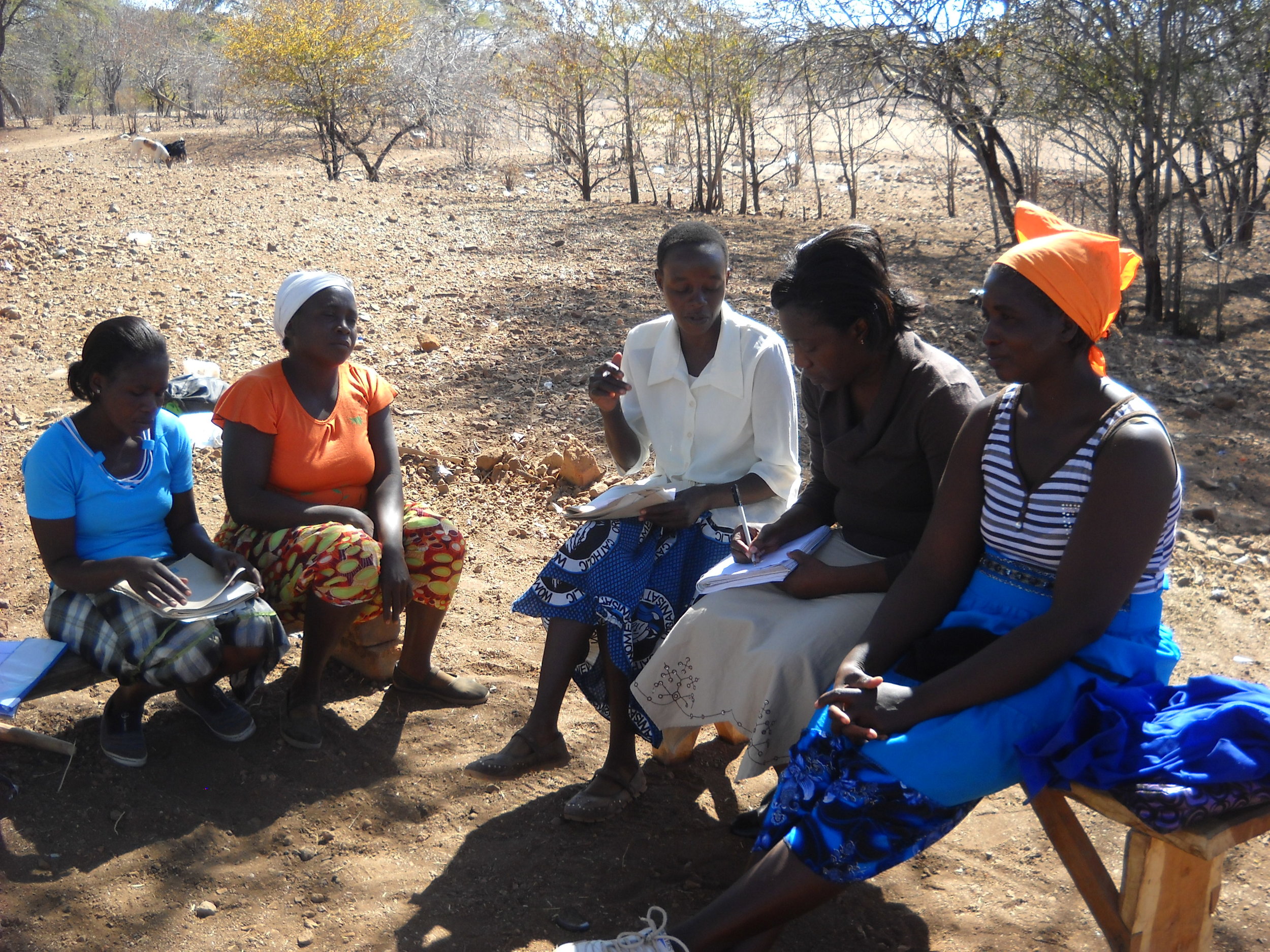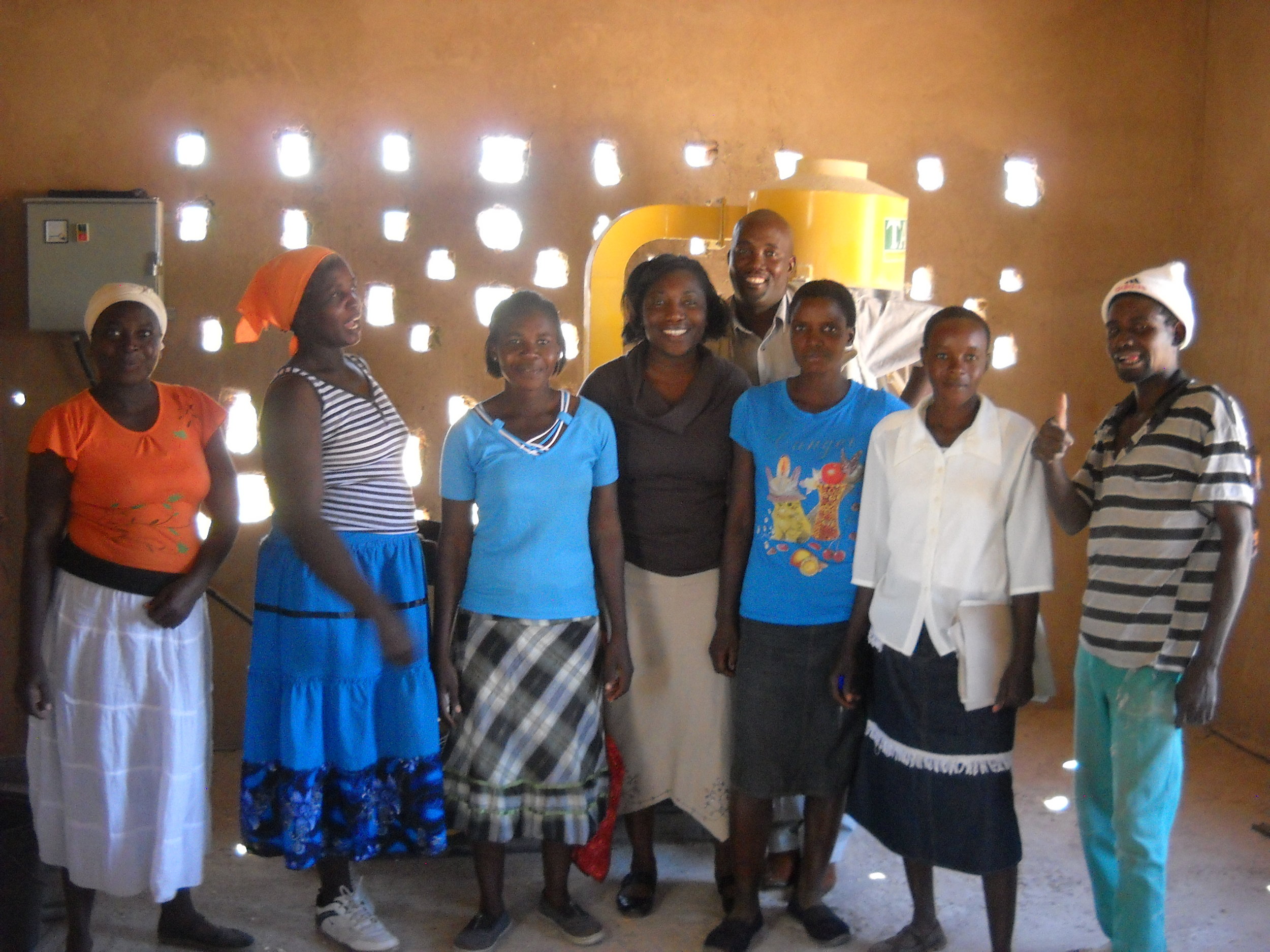Launching a Grinding Mill Business
We have seen many organizations struggle when they try to establish a business to fund their activities. Large income-generating activities seem particularly difficult for organizations to launch successfully. Often times people working at community organizations do not have business experience. This makes it difficult to know how to do a market analysis, write a business plan, or estimate overhead costs. Even successful businesses often take many years to generate a substantial profit. If the business is successful, sometimes it can divert the focus of the organization's staff from their programmatic work toward the business. This can make the core work and mission of the organization suffer.
However, one of our partners in Zimbabwe, Basilwizi, has successfully launched a grinding mill business funded by Firelight in 2010. We talked with Frank Mudimba, Director of Basilwizi about what they learned in the process.
Frank, you mentioned that the grinding mill is now supporting students with school fees and is being run by the community. How many students has the grinding mill supported?
The grinding mill is currently supporting eight children(2 females and 6 males) with school fees, uniforms and food supplies. All these children are at secondary level.
Firelight has supported many grinding mills, but often organizations face challenges in implementation and some grinding mills never result in supporting the community or children. We are curious to know how this process went for you. Did you face any challenges in the construction or implementation? How did you overcome them?
The challenges faced during the construction of the grinding mill were around sourcing of construction materials and payment of the builders. However, it is pleasing to learn that community participation in form of labour contribution was excellent. The committee organized the community to mould earth bricks, ferry river sand and water. The Village Heads also played an important role of motivating the community members to work as a team.
Through high level lobbying skills by the grinding mill committee, a well wisher and manager at Musuna Resort was sought to contribute to the orphans and vulnerable children’s project by offering a tractor, which was used to ferry river sand, concrete stone, stones and other raw materials to the site. Assistants (for labour) for the builder and food for members working at the project came from community contributions.
Villages were working in turns through community labour pooling system and each village provided for its food requirements and other essential needs during their working days. The project faced hurdles to acquire a business stand, a process which is facilitated through the local authority which is located 70km away and highly inaccessible. However, due to very strong working relationships between Basilwizi and the Hwange Rural district Council, this process was hastened in view of the purpose of the project, that of supporting Orphans.The application for the stand upon which to construct the grinding mill was allowed to skip a full council sitting resolution and was allocated quickly to facilitate commencement of construction.
The other delay was from Zimbabwe Electricity Supply Authority (ZESA) which delayed to install the power for the grinding mill. Again, Basilwizi had to intervene and provided transport for the ZESA technicians to go to site and inspect the building. A local business man came in with ‘in-kind’ donation of free labour in laying electrical conduits in the building. The capacity of the community members on record keeping, project management and conflict management was low hence the project had to conduct a capacity building training to effectively and efficiently run the project.
We know there were other costs to getting the grinding mill operational than the $5,500 provided by Firelight. What was the total cost and where did you source the necessary resources?
The cost of the grinding mill was $9,700. Basilwizi contributed about $2,600 from our reserves on human resources budget, the community contributed about $800 in food and labour while the balance came from a local business man in the form of electrical conduits and technical labour in the actual laying of conduits and installing the grinding mill.
How long did it take before the mill started earning an income?
It took almost a year for the project to start earning income owing to challenges cited above.
How much income does the mill produce per month?
Monthly income for the grinding is averaging $210.00. The project is dependent on the availability of good harvests in the area and government grain loan schemes. When communities receive grains from grain loan scheme, the grinding mill project also earns better incomes.
How is this income used?
This income is used to:
1. Pay school fees and food provisions for 8 children at Neshaya Secondary School
2. Maintain the grinding mill/running costs (buying grease, sieve when broken)
3. Pay electricity bills
4. Pay the mill attendant
5. Pay monthly licenses to Hwange Council
Do you expect to cover more children’s school fees in the future? If so, please explain your plan for increasing the income.
In view of the ever increasing number of OVCs that need support we have a deliberate intention to cover more children’s school fees if funding is available and also through the grinding mill revenue. The plan is to venture into intensive support to local fishers through enhancing their access to profitable markets to increase income levels in the community which in turn is hoped to increase business at the grinding mill.
If grinding mill project could generate more income some of the money could be used to buy one or two deep freezers where they could store fresh fish for reselling and generate more income in addition to the actual grinding mill income. This is an add-on income generating activity building on the already existing intervention as way of diversifying income sources. The foundation is already laid out in that the grinding mill has electricity and a capable committee running the business.
Several times now you have mentioned conducting conflict management training with the group running the mill. What is the nature of the conflicts they face?
This training was really very helpful. Project committee members had problems of pre-conceived ideas that former committee members earned monthly incomes. This resulted in changing of members in the management committee so often as incoming committee would pullout after realisation that operations were purely voluntary.
There was also lack of transparency regarding incomes earned by the grinding mill itself with some community members having suspicions on others running the committee. After the conflict management training, there were no reports to Basilwizi highlighting problems that were likely to affect the running of the project.
What advice would you give another organization that is attempting to establish a community-run grinding mill?
A grinding mill project is very beneficial and important if properly managed. Foremost there is need for the needs assessment and to establish a fundamental monitoring and evaluation system for project members to monitor own progress. Lesson learnt on the Musuna project is a critical need for the feasibility measurement of project funds against the bill of quantities. The Musuna scenario established that the initial budget was only enough to purchase the grinding mill not enough to fund the structure and other initial costs. There is also need to consider the aspect of capacity building on the part of project beneficiaries to support the core intervention.
The community must be responsible for identifying an income generating project which they have to marry to the existing needs in the community like the Musuna scenario. If this is done, the community will be sure to support the project and see it grow through sacrifices like we saw in Musuna.
As lessons learnt from Musuna grinding mill project, committee members need a thorough training in records keeping and conflict management. Conflict within the project members can destroy the income generating project but these trainings assist to minimize such anomalies. Again, Musuna project committee members lacked knowledge on financial record keeping of their project but are currently in a position to effectively run the project with limited external technical support.
The management committee is now able even to produce graphs that depict the financial standing of the project as well as the production strata. Further to that ownership of the project needs to be clearly defined to enhance participation at the project by communities involved. It’s imperative to have project members have authority and control over their project so as to enhance sustenance of the project. Finally, it is vital to involve government line ministries responsible for small enterprises who are usually vested with powers to steer communities through such projects.
Basilwizi is not an expert in this type of approach to community empowerment. Our strength is on advocacy and community mobilisation and we give credence to the success of the grinding mill to a well mobilised community, which has an agreed upon need. Therefore, as we continue to learn and get inspiration from the Firelight Foundation team, we are also hoping to contribute to knowledge and best practices development. Basilwizi therefore has no restrictions on the sharing of components of our work with the world as this is believed to help in the betterment of children’s lives the world over.





